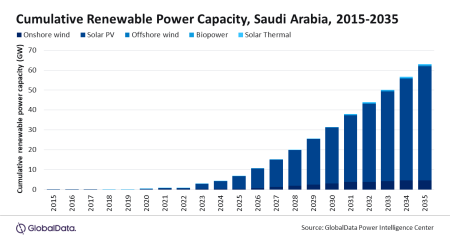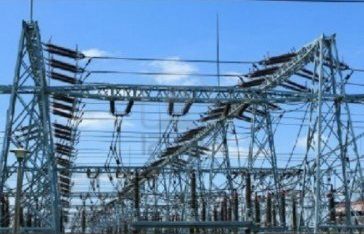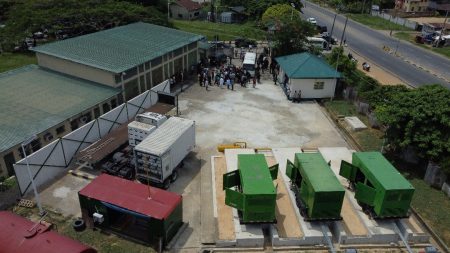 10 February 2014, Lagos – As the Nigerian National Petroleum Corporation (NNPC) battles to address the acute gas supply challenges facing the newly-privatised power stations of the defunct Power Holding Company of Nigeria (PHCN), inadequate supply of gas has also stalled the smooth operations of the new power stations built under the National Integrated Power Project (NIPP), which are currently undergoing privatisation, THISDAY has learnt.
10 February 2014, Lagos – As the Nigerian National Petroleum Corporation (NNPC) battles to address the acute gas supply challenges facing the newly-privatised power stations of the defunct Power Holding Company of Nigeria (PHCN), inadequate supply of gas has also stalled the smooth operations of the new power stations built under the National Integrated Power Project (NIPP), which are currently undergoing privatisation, THISDAY has learnt.
Investigations have revealed that some units of most of the 10 medium-sized gas-fired power stations built nationwide, which are expected to add 4,774MW of electricity to the national grid, have been completed and ready for test-firing. But inadequate gas supply from NNPC is threatening the operations of the power plants.
However, electricity output from old power stations may improve soon as NNPC has completed repair works on damaged parts of its gas-to-power supply pipeline, which would add an equivalent of 1,505MW of electricity to the national grid.
On the NIPP plants, one of the 10 thermal stations, the Ihovbor Power Station in Edo State, which is being operated by the Benin Generation Company Limited, with Marubeni Engineering West Africa Limited as the Engineering Procurement and Construction (EPC) contractor, has a nameplate capacity of 507.6MW and generating capacity of 451MW.
A source close to the contractors told THISDAY at the weekend that of the four units of 112.5MW each, three units had been test-fired but only one unit is generating power due to the shortage of gas to fire the outstanding units.
It was however learnt that the fourth unit was started on what the contractors called a “slow roll” last Wednesday, in preparation for the first fire.
The second plant, Sapele Power Plant, operated by Ogorode Generation Company Limited, which also has Marubeni Engineering West Africa Limited as the EPC contractor, has a nameplate capacity of 507.6MW and a generating capacity of 451MW.
THISDAY gathered from sources close to the contractors that of the four units, which were inaugurated about two years ago, three are operational but there is limited gas to fire them.
It was also gathered that the fourth unit was experiencing some foundation problems as cable 3 on which the foundation was laid has some problems, which are being rectified by the contractors.
In addition, the 634.5MW-capacity Calabar Power Plant, also built by Marubeni Engineering West Africa Limited, with Calabar Generation Company Limited as operator, has since been completed technically and is ready for inauguration, which is expected to be performed by President Goodluck Jonathan.
A source close to the plant however told THISDAY that there is no gas to test-run the plant for its inauguration and there are no indications that Addax Petroleum, which is billed to supply 100 million standard cubic feet of gas per day (mmscf/d) to the facility, would deliver the gas this year.
He however said the alternative routes for gas, being worked out, had reached advanced stages of completion.
Inadequate gas supply has also stalled the operation of the six-unit capacity Alaoji Power Plant in Abia State, which is the biggest plant under the NIPP, with a nameplate capacity of 1,131.4MW.
Investigations revealed that four out of the six units of the plant, built by an indigenous contractor, Rockson Engineering Limited, have been technically completed but only two units are producing at sub-optimal capacity due to the shortage of gas.
THISDAY was informed that without enough gas to fire the four gas-powered units, the remaining two units, which will run on steam, cannot generate power.
It was learnt that as a combined cycle power plant, which runs on both steam and gas, the two steam turbines can only generate electricity when the four gas turbines generate enough steam to fire the two steam turbines.
“It is the four gas turbines that will fire the water boilers to produce steam that is used to operate the steam turbines to avoid waste of energy. So, without gas to fire the four completed gas turbines, the two steam turbines cannot generate power.
“It is because of the shortage of gas to fire the four units that the contract for the two units that will run on steam has not been fine-tuned,” said the source.
THISDAY further learnt that the 225MW-capacity Gbarain Ubie Power Plant in Bayelsa State is the only NIPP station that will not experience shortage of gas due to the nearby Gbarain Ubie Integrated Oil and Gas project operated by the Shell Petroleum Development Company (SPDC) joint venture.
However, the Gbarain Ubie plant is the only NIPP power station that has not reached advanced stages of completion because the contractor, Rockson Engineering, was said to have experienced serious site-related challenges at the early stage of the project.
The project site was about four metres below sea level, compelling the contractor to spend almost two years removing the bad topsoil, filling the site and compacting the sand.
“The project is still under development but there is gas and we expect the project to be near completion by June this year,” said a source.
NNPC has blamed the loss of 480mmscf/d to vandalism of its pipeline, especially the Escravos-Warri Lagos Pipeline from which 190mmscf/d of gas supply is lost.
According to the NNPC, 230mmscf/d is also lost from the Trans-Forcados crude pipeline, while a shortfall of 60mmscf/d was recorded recently due to maintenance issues at the Utorogu gas plant in Delta State.
There are indications, however, that NNPC has completed the repair of the Lagos-Escravos pipelines, with a capacity to restore supply of over 190mmscf/d of gas.
But this latest development, an industry source explained, would only improve gas supply to the privatised Egbin power station in Lagos and the West African Gas Pipeline Company (WAGPCo), which takes gas to neighbouring Ghana, Benin and Togo, leaving just limited supply to the NIPP plants at Omotosho in Ondo State and Olorunsogo in Ogun State.
He added that of the three units of the 434MW-capacity NIPP Geregu II power plant built in Ajaokuta, Kogi State, built by Siemens Nigeria Limited, only one supplied power to the grid at the weekend because of inadequate supply of gas.
THISDAY also gathered that only one out of the four units of the Olorunsogo II Power Station in Ogun State, which was built by SEPCO III Electric Power Corporation of China and inaugurated last year, was on grid due to shortage of gas to fire the turbines.
The Omotosho II Power Plant, a 451MW-capacity plant built in Okitipupa Local Government Area of Ondo State, built by China Machinery Engineering Corporation (CMEC), is also experiencing severe shortage of gas as only one out of the four units is on the grid.
Meanwhile, NNPC at the weekend confirmed the repair of its gas-to-power supply pipeline that will lead to the re-injection of an equivalent of 1,505 MW of electricity into the national grid.
NNPC, in a statement issued Sunday in Abuja by its acting Group General Manager, Public Affairs, Dr. Farouk Ibrahim, said it had completed repair work on the sections of the sabotaged Escravos-Lagos Gas Pipeline network.
Ibrahim explained that the repair, which has ended almost seven months of gas supply outage that was caused by the willful hacking of the pipeline in Delta State, would now enable it to re-inject almost 200mmscf/d of gas into generation for the electricity grid.
He said it was singly equivalent to about 700MW of electricity, adding that the corporation last week completed repair work on the pulverised Trans-Forcados pipeline, which accounts for 230 mmscf/d of gas that is the equivalent to 805MW of electricity.
“With the latest successful repair of the ELPS, NNPC within the last one week is injecting a total of 430 mmscf/d of gas into the grid which translates to 1,505MW of electricity every day,” Ibrahim said.
– Ejiofor Alike and Chineme Okafor, This Day



